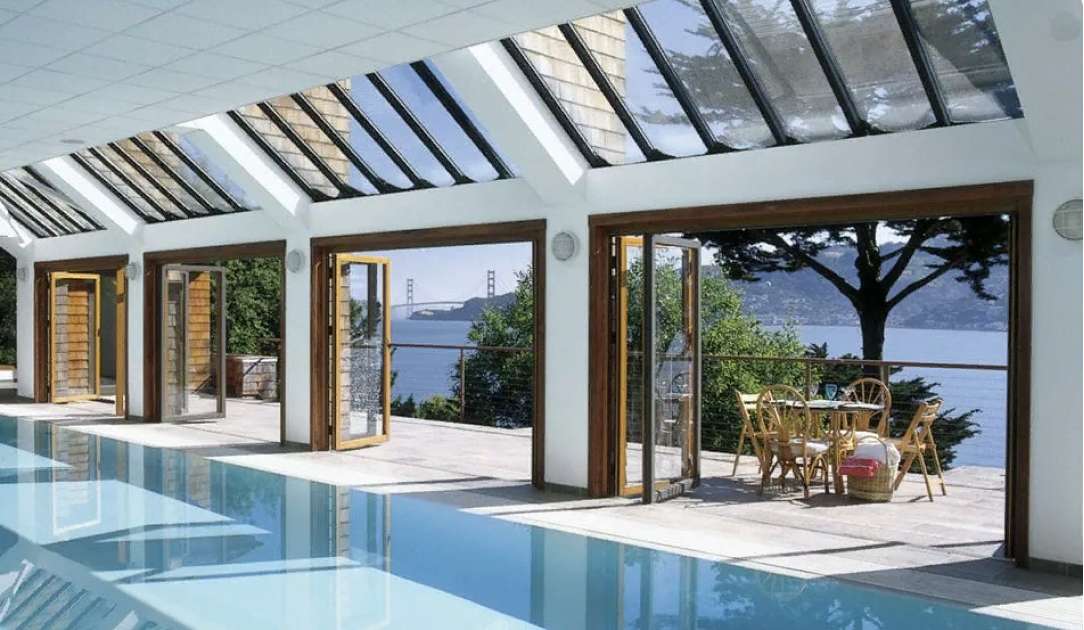The Complete Guide to Permeable Pavers: Enhancing Sustainability and Functionality
- #Exterior Remodeling

- Smooth Plaster Finish
- Shimmering Pebble Finish
In recent years, the demand for sustainable and environmentally friendly hardscape solutions has grown significantly. Among the various options available, permeable pavers have emerged as a popular choice for homeowners and landscape designers alike. In this comprehensive guide, we will explore the concept of permeable pavers, their benefits, and why they are an excellent option for your outdoor projects. From reducing stormwater runoff to promoting groundwater recharge, permeable pavers offer a range of advantages that contribute to both environmental conservation and functional design.
Understanding Permeable Pavers:
- Definition: Permeable pavers, also known as porous or pervious pavers, are specially designed paving materials that allow water to pass through them and infiltrate the underlying soil.
- How They Work: Permeable pavers feature unique joint patterns, void spaces, or porous materials that enable water to flow through the surface and into the ground below.
Advantages of Permeable Pavers:
- Stormwater Management: Permeable pavers help mitigate stormwater runoff by reducing the volume and velocity of water flowing into storm drains. This helps prevent flooding and minimizes strain on municipal drainage systems.
- Groundwater Recharge: By allowing water to infiltrate into the soil, permeable pavers support groundwater replenishment, maintaining natural water cycles and supporting healthy ecosystems.
- Environmental Benefits: Permeable pavers promote natural filtration of rainwater, removing pollutants and contaminants as the water percolates through the soil. This helps improve water quality in rivers, lakes, and streams.
- Heat Island Effect Reduction: Unlike traditional impervious surfaces, permeable pavers reduce the heat island effect by allowing water to evaporate from the surface, keeping the surrounding area cooler.
- Enhanced Drainage: Permeable pavers prevent the accumulation of standing water, reducing the risk of slippery surfaces and providing a safer outdoor environment.
- Design Flexibility: With a wide range of colors, shapes, and sizes available, permeable pavers offer design versatility, allowing you to create unique and visually appealing hardscapes that blend seamlessly with your surroundings.
Applications of Permeable Pavers:
- Driveways: Permeable pavers can replace traditional asphalt or concrete driveways, providing a visually pleasing surface while allowing water to drain effectively.
- Patios and Walkways: Create functional and aesthetically pleasing outdoor living spaces using permeable pavers, ensuring proper drainage and reducing the risk of surface water accumulation.
- Parking Lots: Permeable pavers can be utilized in parking lots to manage stormwater runoff and comply with local regulations on sustainable site design.
Installation and Maintenance:
- Installation Process: Proper installation techniques and base preparations are crucial for the long-term performance of permeable pavers. Professional installation ensures optimal functionality and durability.
- Maintenance: Regular maintenance typically involves inspecting the paver joints, clearing debris, and occasionally vacuuming or power washing the surface. Periodic inspections help ensure that the pavers remain free of clogs and perform optimally.
Choosing the Right Permeable Pavers:
- Material Options: Permeable pavers are available in various materials, including concrete, clay, and recycled materials. Each material offers unique characteristics and aesthetic appeal.
- Considerations: Factors such as budget, design preferences, local regulations, and intended use should be taken into account when selecting the appropriate permeable pavers for your project.
Permeable pavers present an innovative and sustainable solution for hardscape projects. By allowing water to infiltrate the ground, they contribute to stormwater management, groundwater recharge, environmental protection, and functional design. Whether you’re considering a permeable









